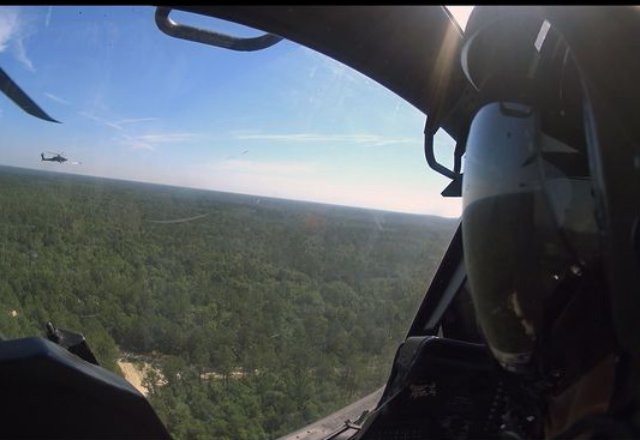The US Army wants to convert data from multiple distributed sensors into a 3-D hologram beamed inside a cockpit. The goal is to ease the workload on Army pilots overwhelmed by flying their own aircraft while trying to operate unmanned aircraft in manned-unmanned teaming, according to the Army research solicitation.
“Each individual sensor will provide full-motion video as well as accompanying metadata describing the geospatial position and orientation of the sensor,” the Army said.
“A centralized processor will analyze the imagery from each sensor to render the scene in three dimensions, and synthesize information collected from many distributed sensors into a single common database. The MC [mission commander] can easily manipulate the display to view the environment from any vantage point without the risk of entering dangerous airspace or the expense of time and fuel to reposition an aircraft. The three-dimensional world model will also support the display of additional information using synthetic visualization methods, such as flight paths, line-of-sight calculations, and weapon effectiveness ranges.”
The 3-D hologram would be seen on a head-mounted display or flat-panel display. “The use of an HMD will allow the imagery to be presented as a virtual hologram, allowing the MC to see a virtual representation of the entire battlespace floating inside their cockpit,” said the Army.
Photo: Chief Warrant Officer 3 Adam Kozel, Company A, 1st Battalion, 3rd Aviation Regiment, 3rd Combat Aviation Brigade, watches from the cockpit of his aircraft as an AH-64 Apache attack helicopter fires a Hellfire missile at a target that was laser designated by an MQ-1C Gray Eagle unmanned aerial system at the Multi-Purpose Range Complex on Fort Stewart. – Chief Warrant Officer 3 Adam Kozel/U.S. Army
Source: C4ISR & Neteworks

